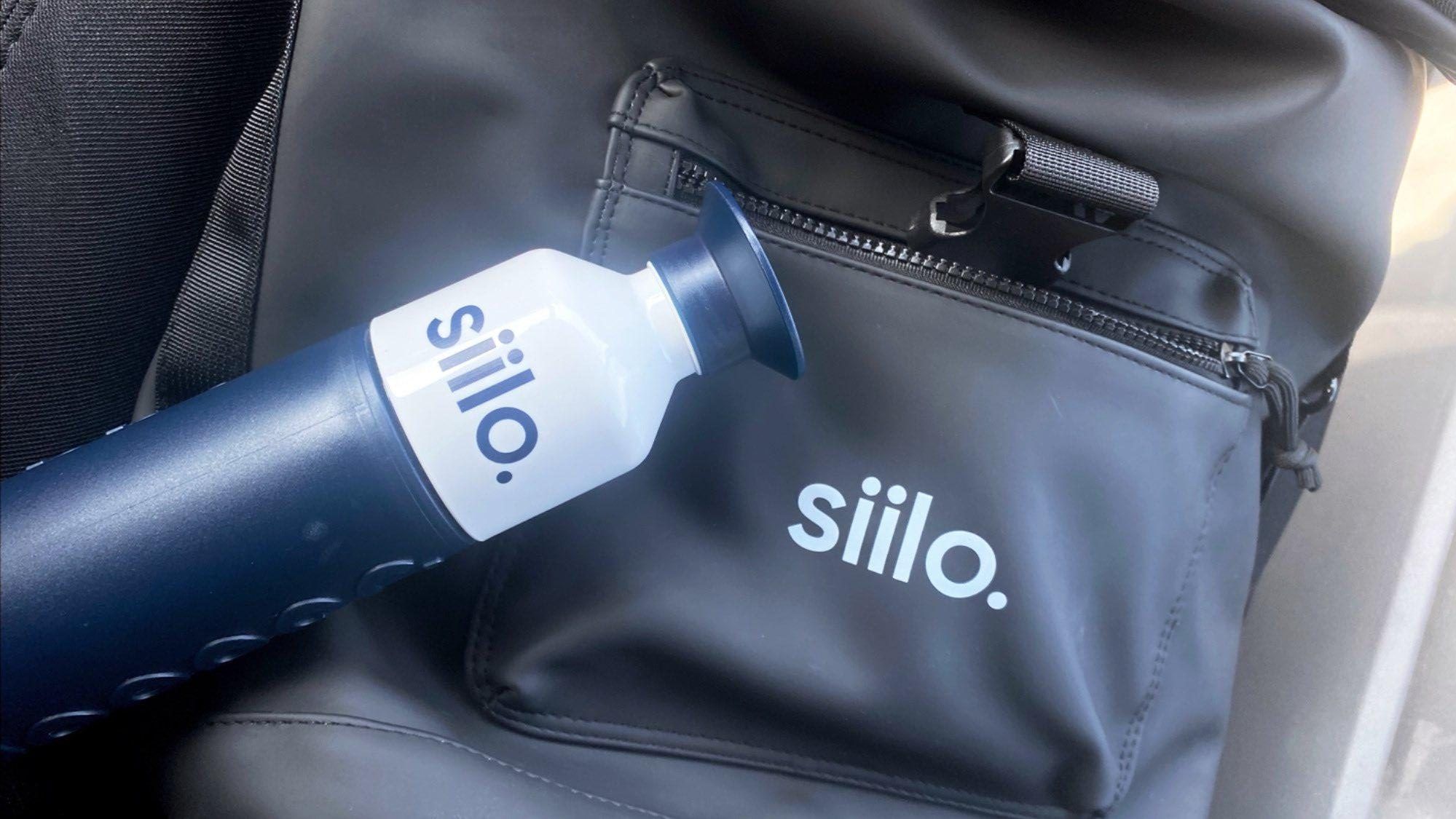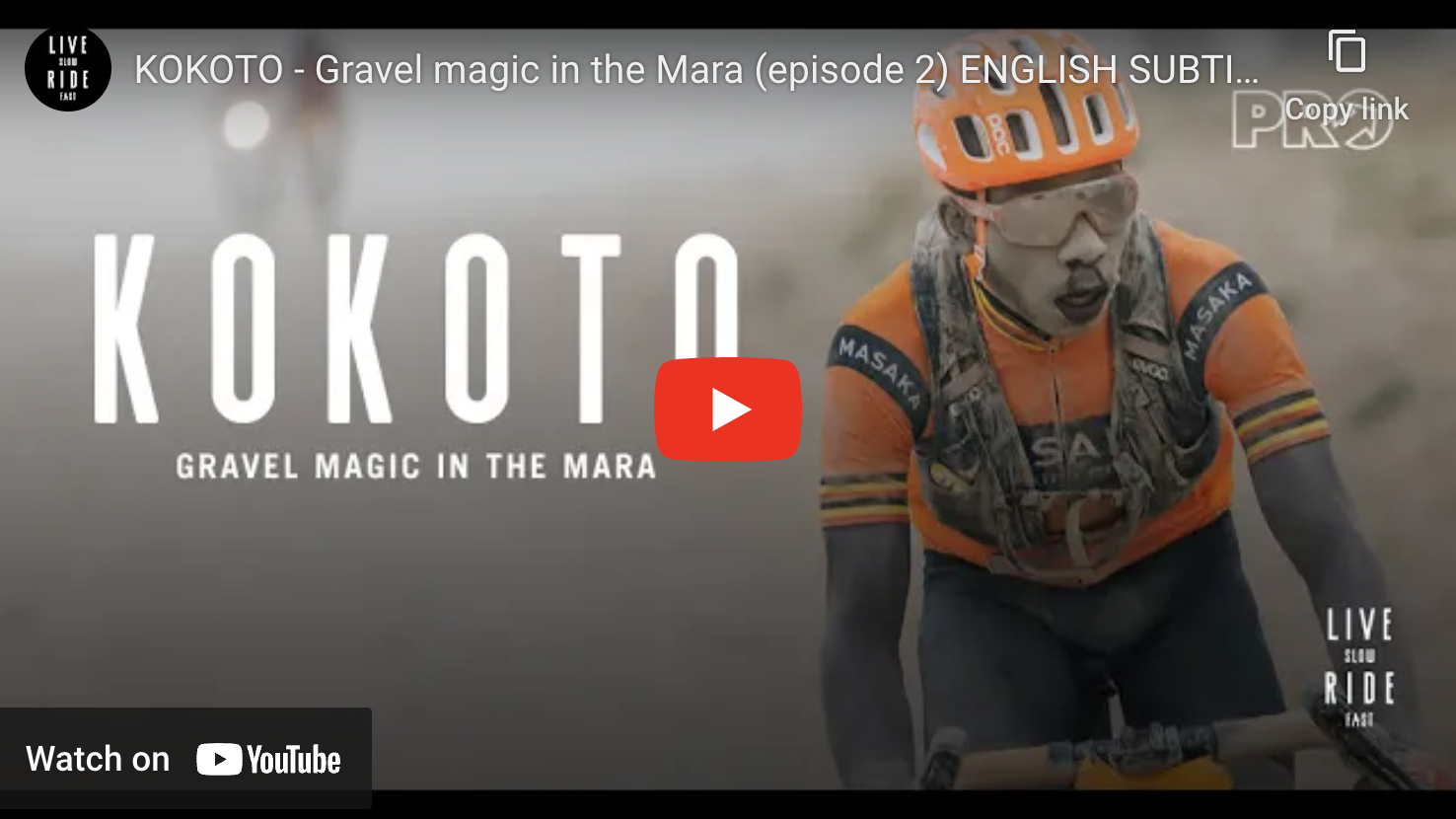
Siilo Sponsorship
Mieke Luten’s Endurance Race Blog
General Practitioner and Expedition Medic Mieke Luten is going to Kenya, where she will lead the medical part of the Migration Gravel Race (MGR), a four day Stage Race through the Maasai Mara. After that, she will ride the Evolution Gravel Race in Tanzania herself. Scroll down for Mieke’s travel blog.
Final Stage: 165 km and 1500m of elevation
It’s a very loud night, many animals keep a lot of people awake. Hyena’s, monkeys, birds? Probably all of them, and do I hear some elephants as well? This camp has no reception (unless you walk up the hill) and thankfully the elephants leave us alone.
This is the final stage and although there are still many people in the car (not riding bikes), a lot of them got better and are ready to ride today. Another long stage with beautiful scenery including donkeys (a lot of donkeys) on the road. A rider we met earlier crashes (his girlfriend was the one who had to quit yesterday because she didn’t feel too well). A simple tremble makes him faceplant, his bike is intact, but he lacerates his lip and the fall shuffles his teeth. Together we stitch him up, out on the back of a car, luckily he feels well and gets back on the bike, determined to finish the full course.
One of the women in the field falls forcefully on her hip. She has to leave the race because it’s the second time she fell on it. There’s too much pain to keep riding, even with painkillers. We continue and we see zebras, elephants, giraffes, hippos and reach the second waterstop. Luckily nothing bad happens after that, and I get to the finish line in a helicopter, because he riders are too fast to follow and we can’t ride the car on most of the tour.
I get to see the Mara River from above. We see crocodiles in a lake and, more importantly, we see the lead pack in the race riding together. It seems that the riders from the Amani team are working together and leading with three of them. We land and shortly after we see the winner finishing. Number two in the GC is only 7 minutes behind and finishes with a two minute gap in favour to number one.
After every one is in, there’s a ceremony. People who finish the full course get a finishers medal and are blessed by the Maasai. Jaco is honoured as the toughest rider with an invite to come back next year. I get goosebumps hearing Mikel (the head cheerleader of team Amani as he calls himself) speak to the riders. So many smiles and happy faces and also so many tired faces. This year has been bigger, faster and better. A lot more medical stuff and it has been amazing to take part in it this way.
I am very thankful to Siilo to make this possible, very thankful to get the opportunity to do this and very happy with the years of work ahead.
Tomorrow morning there’s a game drive and it’s time to change from medic to cyclist. It will be fun they said, and it has been so far!
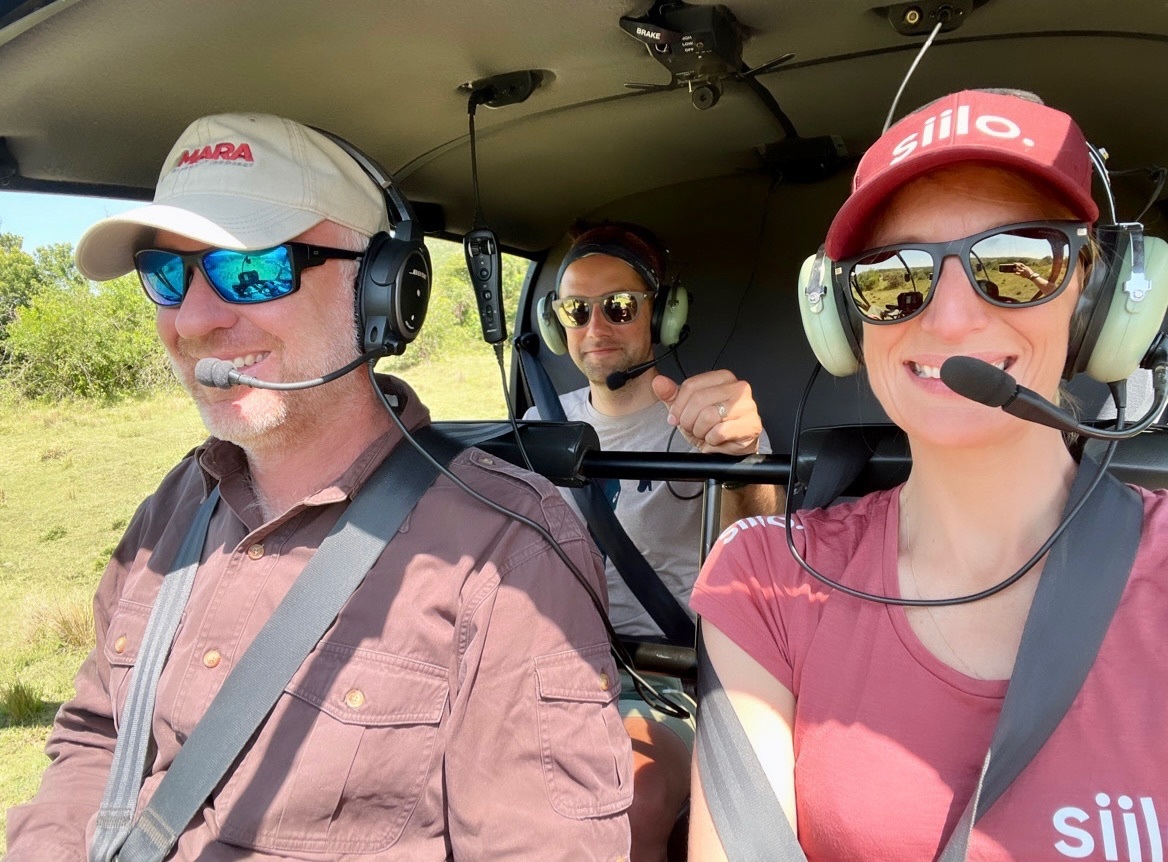
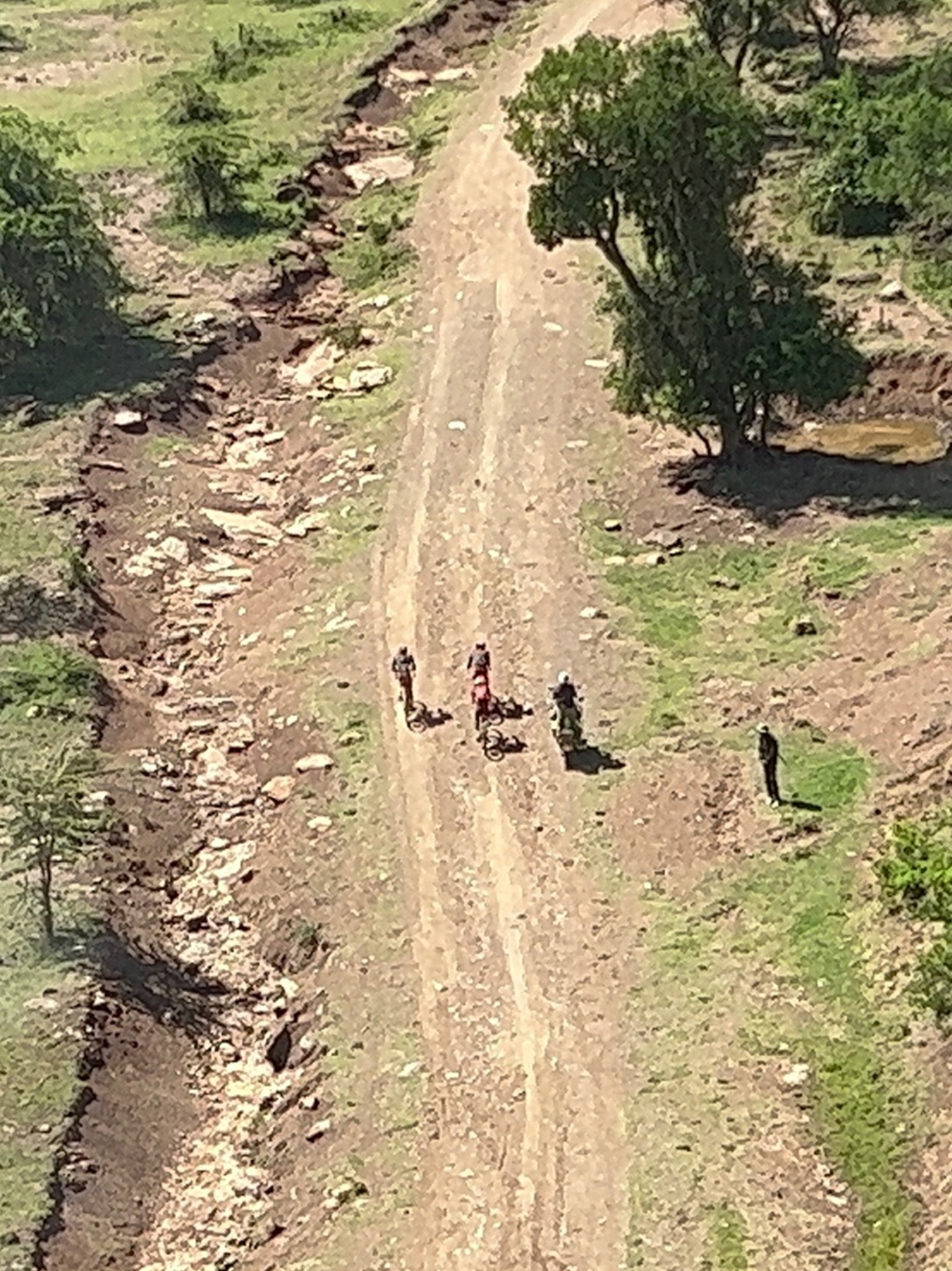
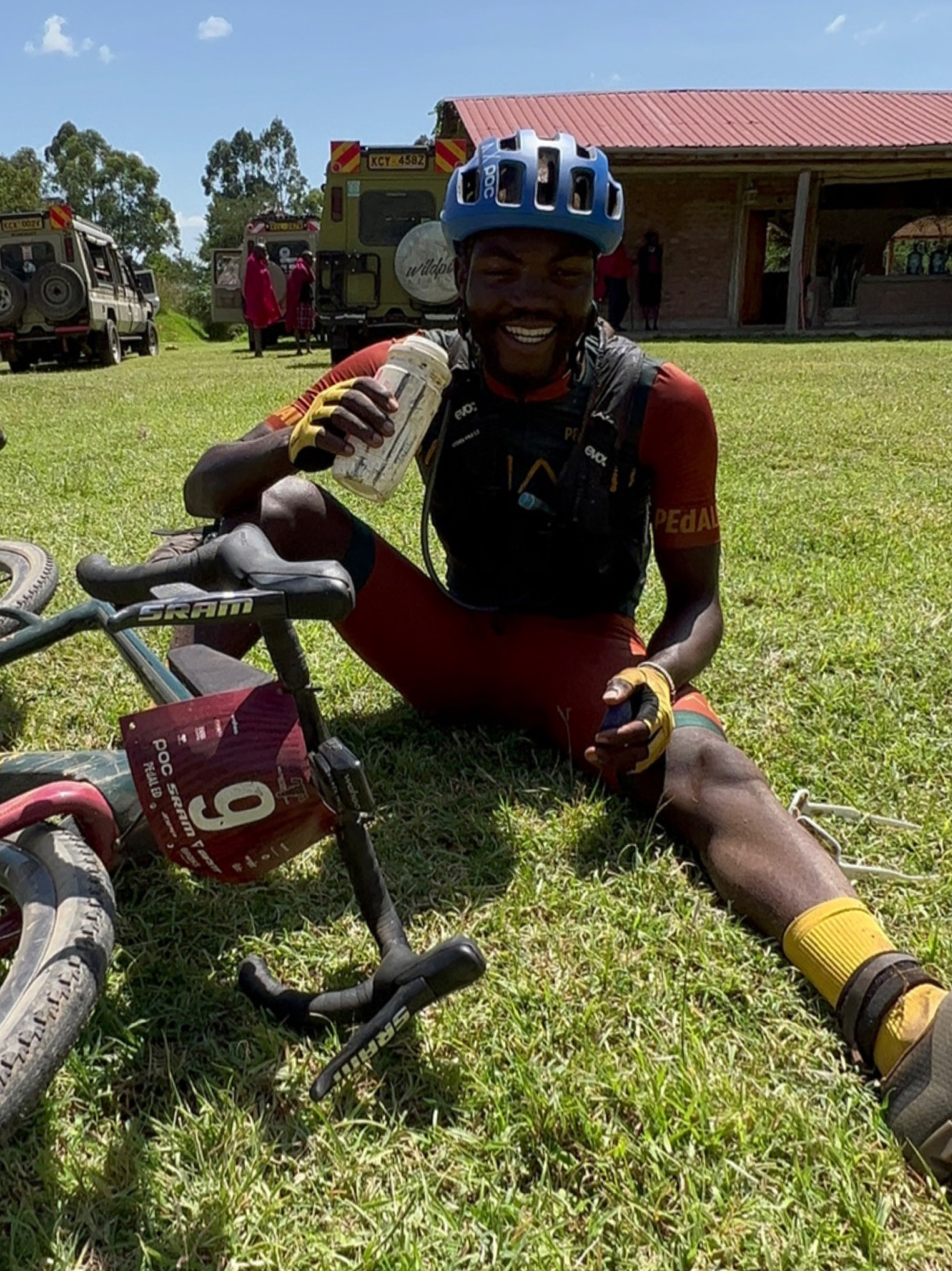
—
Stage 3
Last night I was woken up by James, if we could check tent number X. One of the riders was not feeling well: feverish, coughing, sweating. In these times, your initial thoughts go to COVID, but this time I wondered if it could be Malaria? Or Dengue?
The rider is not taking any Prophylaxis, since he is living in the prone area in Rwanda. The fever isn’t high yet, and we do end up testing for COVID. The test shows negative and that gives a sigh of relief, an outbreak of COVID wouldn’t be fun. There seem to be signs of an upper airway infection and we start treatment. Are these riders all carrying the same bug, is it viral, what if everyone gets ill? But then I realise this rider has chosen to share the tent with another rider, for 3 nights in a row, and she is not experiencing any problems. So it might be a non viral infection. Malaria tests are untraceable unfortunately. So we decide to check on all of them again in the morning before the third stage. I head back to bed and get some sleep.
It’s a short night, alarms go off around 4 am, and I decide to get up early. When I get out of the tent I wake up to an amazing sunrise, the sky is clear and hazes of colour rock up. It makes me happy, what a life! I get this opportunity to do this, by being here supporting AMANI and doing what I like best, being surrounded by nature, with like minded people, doing my best to support people in their journey through the Mara.
Last night we heard hyenas (a whooping sound, Google it, you might not expect it). We are out bush, and we’re happy with the Maasai protecting us. Today is a fast stage, relatively short, relatively flat, but rocky and still 127 km and 1300 meters of elevation. People are happy with the late start, everyone is smiling and chatty. What a difference an hour of extra sleep makes. Faces start to show the pain of yesterday’s ride. Some people get more quiet, and many people start to get a harder time eating breakfast because of all the carbs they are consuming during the race (needed to keep the legs going).
I walk over to the tents, the feverish patients haven’t improved much, they can’t race. It’s really sad for the organisers and we now have a full car of patients. Ideally you wouldn’t put them all in the same vehicle, but it is all we have. The lady from day one decides to get on the bike today, she’s been brought in last night and can hold some food down. Although I’m a little worried about it, we let her, she will ride with her boyfriend and can take it easy today.
There’s a fast start and the terrain changes quickly between red dirt, black cotton, black dust, and gritty terrain surrounded by endless cacti. Because of the speed, and maybe the character of the day, people push, and soon we have to stop because one of the riders falls down. He has a bad cut on his shoulder with a gaping wound, we have to temporarily close it with suture tape. He also has some mild scratches and bruises on his hip and arms so we cover him in bandaids and a heat blanket. The wind has been cooling him down, and he gets in the car with the other people.
As seen in the morning, the race starts to take toll on the bodies, more people along the road fall, scratch and on the fast descent we find one of the riders after a crash. Someone else fell, he had to brake and hit his head on the seat post of the riders in front of him. His helmet did a good job protecting him, it cracked. Unfortunately he complains of seeing blurry and black on one side for half an hour, and he has a slight headache. Otherwise he seems fine, but the fact that he has lost vision for a bit and the other symptoms make us put him in the car. It’s hot outside and this way we can monitor him while driving. That is, after we’ve fixed another flat tire, which we manage to change it within minutes! Team work grows in these days, also in mechanical car issues. It can be a challenge working with people who don’t know you and vice versa, and it’s good we found trust in each other’s work out on the street. We are ready to hit the road again and when we arrive at the next camp a few hours later, our patient in the car already feels a lot better.
At the camp, people drop by the ambulance. We see more wounds, scratches and blisters. The heat causes more sweating and friction. I see some pretty impressive sores on bums, but one of the most impressive rides is a para-olympic champion who rides with a prosthesis. Underneath a little pool of sweat develops a blister and pain. You don’t hear him complain at all. It’s not a ride in the park this race, and he shows true grit. The rest of the patients seem to improve on the medication, apart from the Rwandan guy from last night. He now rocks a 40 degrees fever, complains of a shortness of breath, a headache, is sweating and feels sick with abdominal and muscle pain (and his sore throat didn’t clear yet).
Luckily we manage to arrange anti-malarial tablets to be brought in for him. Let’s hope he gets better soon!

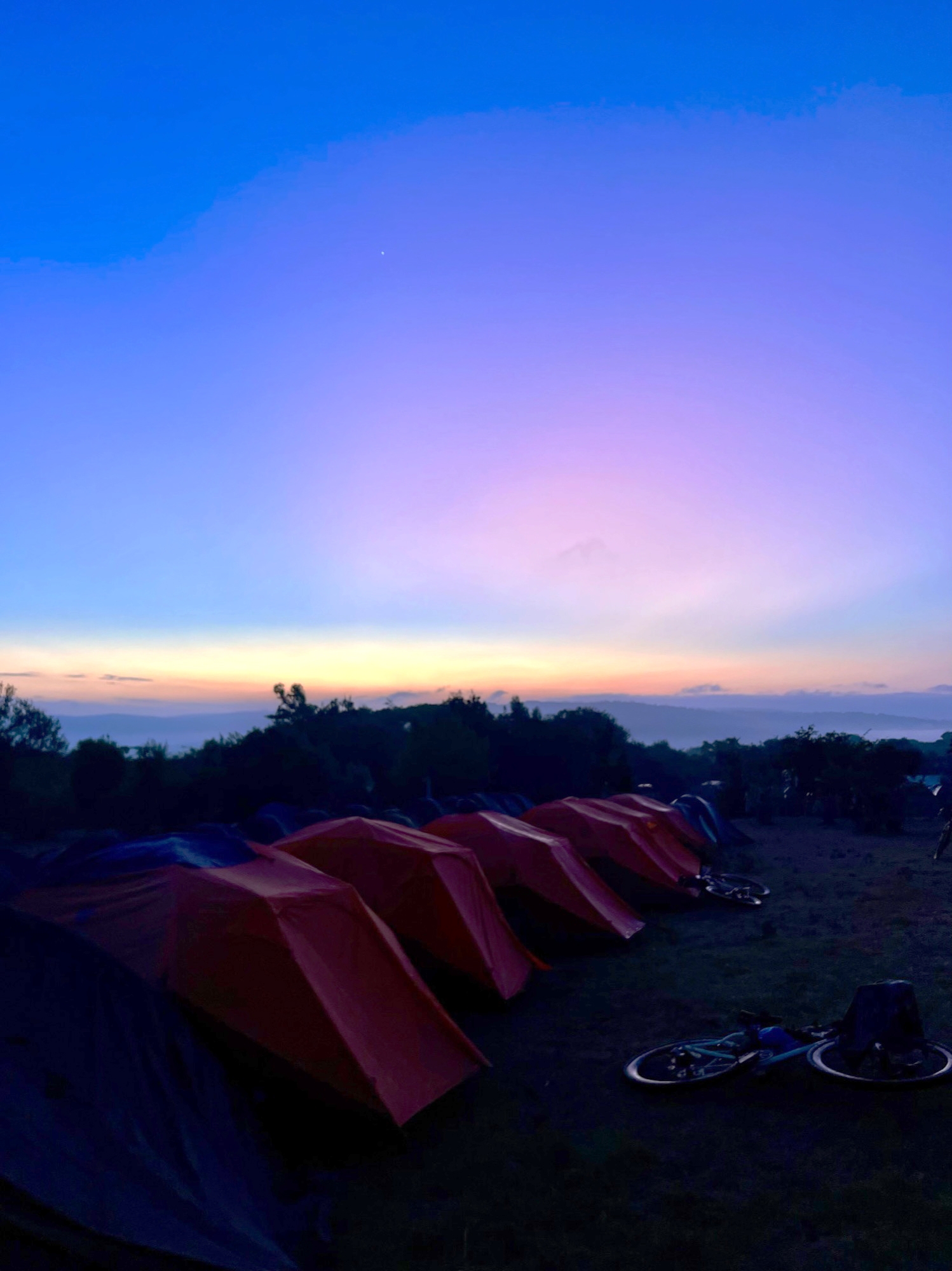
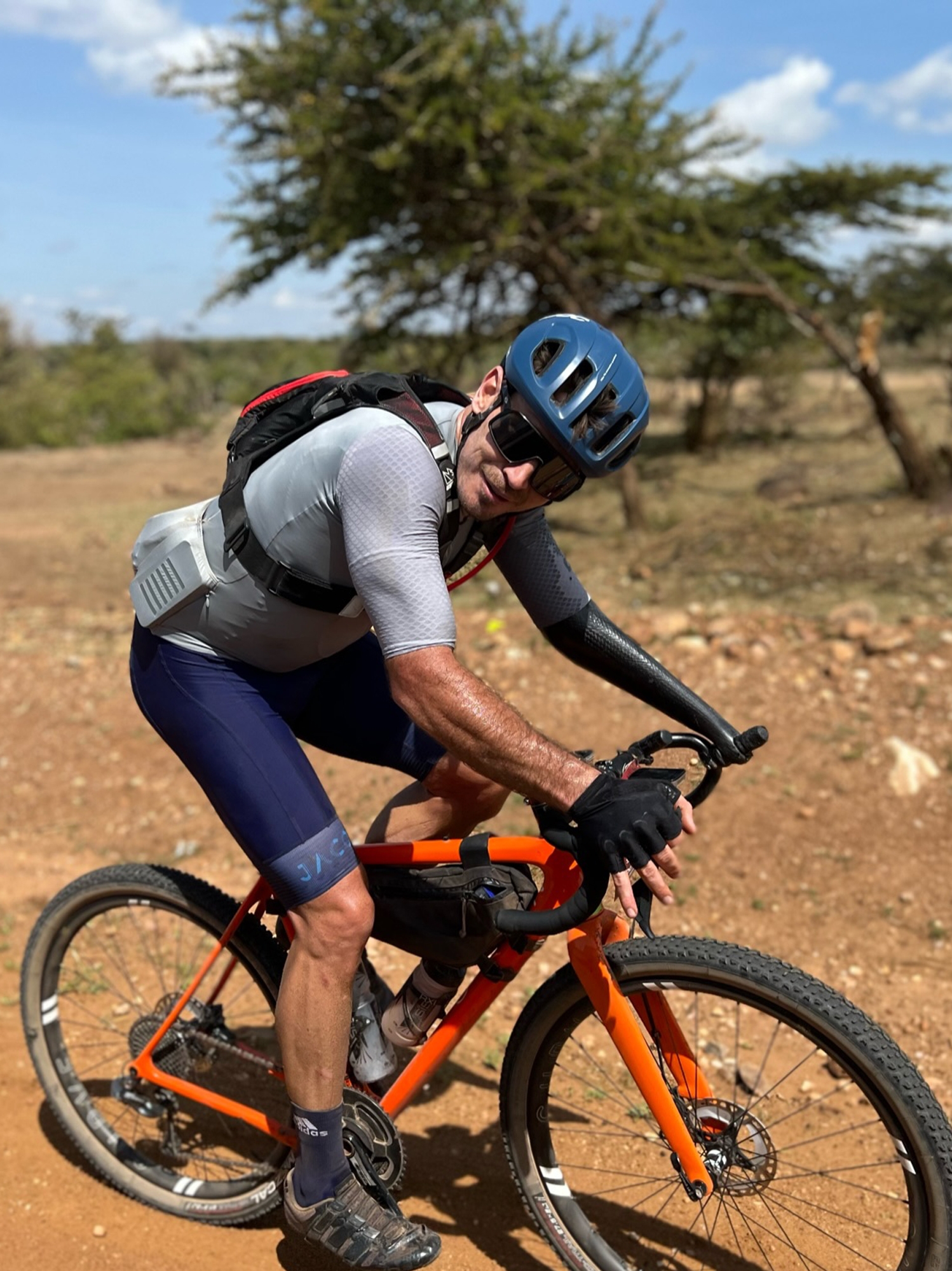
—
Wildebeest crossing
July 11th
On this day last year, it was the hardest and most beautiful day on the bike ever for me. I went through all kinds of terrain, rocks, red dirt, massive climbs, over boulder ridges, through a forest, river crossings and swamps at the end to finish uphill. With this in my mind, I start today with the same crew as yesterday.
Like last year the sun rose beautifully during the start of the race and then the riders hit a red dirt and dusty patch. It’s even dryer than last year and the sand is very soft. There are multiple cars following the group as well as boda boda’s (mopeds) and motorbikes. We share the road with animals; wildebeests crossing the road in this beautiful sunrise. They come in charging like crazy. Imagine trying not to tip over and hold your bike steady on this terrain while having a typical male wildebeest of 250 kg coming at you with a speed of 80 kilometres an hour. It’s not just one of them, but multiple. It’s impressive to think that none of the riders crashed into them.
Just when we are about to hit the climb that leads riders to a level above 3000m, we get a call to turn around. There has been a crash, not with the wildebeest, but with riders. We turn around and drive back as fast as we can with a lot of the riders still coming our way. I like speed and we want to get there fast but don’t want to create another accident. The driver of the ambulance does an impressive job.
Together with the other medic and vehicle we arrive and find one of the stronger riders of The Amani Project on the side of the road, with his bike next to him. He can not bear weight on his right hip. A pelvic binder gives some support and we give him some pain medication. We decide he needs to be checked at the hospital. Just as we think we are ready to go, we realise we have a flat tire. We change it, call the hospital and give the coordinates of the airstrip to AMREF. After arriving there (it’s just a red dirt strip in the open) the plane lands, we transfer our rider to the plane, and only 2.5 hours after the accident he is in Nairobi to be looked after.
We change two tires in the nearest village and after that’s done we head to the second water station of the day. Within half an hour the last rider arrives and we drive to the finish. At the finish line, we see multiple people arriving with small scratches, but also pretty decent hits are taken to shoulders. One of the female leaders (the winner of that day) and one male rider are out after a hard crash. Another one appears to have fallen earlier and didn’t finish. We look for the final two riders, who finished at dusk under the guidance of a motorbike light.
Later in the evening, we find out that the flown-out rider fractured his pelvic bone, luckily he doesn’t need surgery, but he won’t be riding a bike for a while.

Photo credits: Lian van Leeuwen @saltlakelian
—
Ready - Set - Go!
July 5th
We had the very first day of racing, it’s 10pm and I’m in bed now. Tomorrow we start at 5am with breakfast and then departure for the Queens Stage is at 5:45am.
Yesterday, after arriving in the Mara, we had a briefing, people were assigned to their rooms, built their bikes back up and started with the prologue; a short 2hr shake out ride through the Mara to give the riders a little taster of what it will be like in the following week. We followed in a car with the photographers and film crews. And while the shake out ride was coming to an end, we took an extra little stretch and saw elephants!! Majestic animals. Little privilege of being on the other side.
Today, after an early breakfast, porridge, pancakes, local food, coffee (and some 95 nervous exiting riders that create a special vibe), the race took off at sunrise. The riders covered about 127km and some 1000m of elevation. There were less punctures than last year, more racing and luckily for us a very uneventful day. During the race we got a very prominent spectators seat, as we followed the lead pack which was very cool. It’s very different to see the race from this perspective, but also having done the race myself last year makes you realise you know where they will be going and what will be behind every corner. I think this also helps work wise, trying to ‘control’ as many uncontrollables during the race. After the race I even managed to get a short ride in myself, riding the final stretch of the day.
Before every Stage, a helicopter will find out whether there are elephants or buffaloes in the course, and if needed the race will be looped or neutralised.
I realise it will be an intense week. Although today wasn’t very busy, last night was, and until midnight we’ve been busy with people who had stomach/gastric problems and people who had a fever. All who are really eager to race tomorrow, all from different nationalities. One person ended up getting a drip. Not in a hospital bed, but on a couch in the main area, with a boyfriend to hold up the bag with fluids and medication. Since Nairobi is a 6 hour drive away, it makes work and life a bit different.
Tomorrow it’s the Queen’s Stage, the toughest day in the race (175km). Starting early with a big climb, up to 3000m of elevation and finishing uphill. For now, I’ll try and get some sleep.
Good night from the Mara!
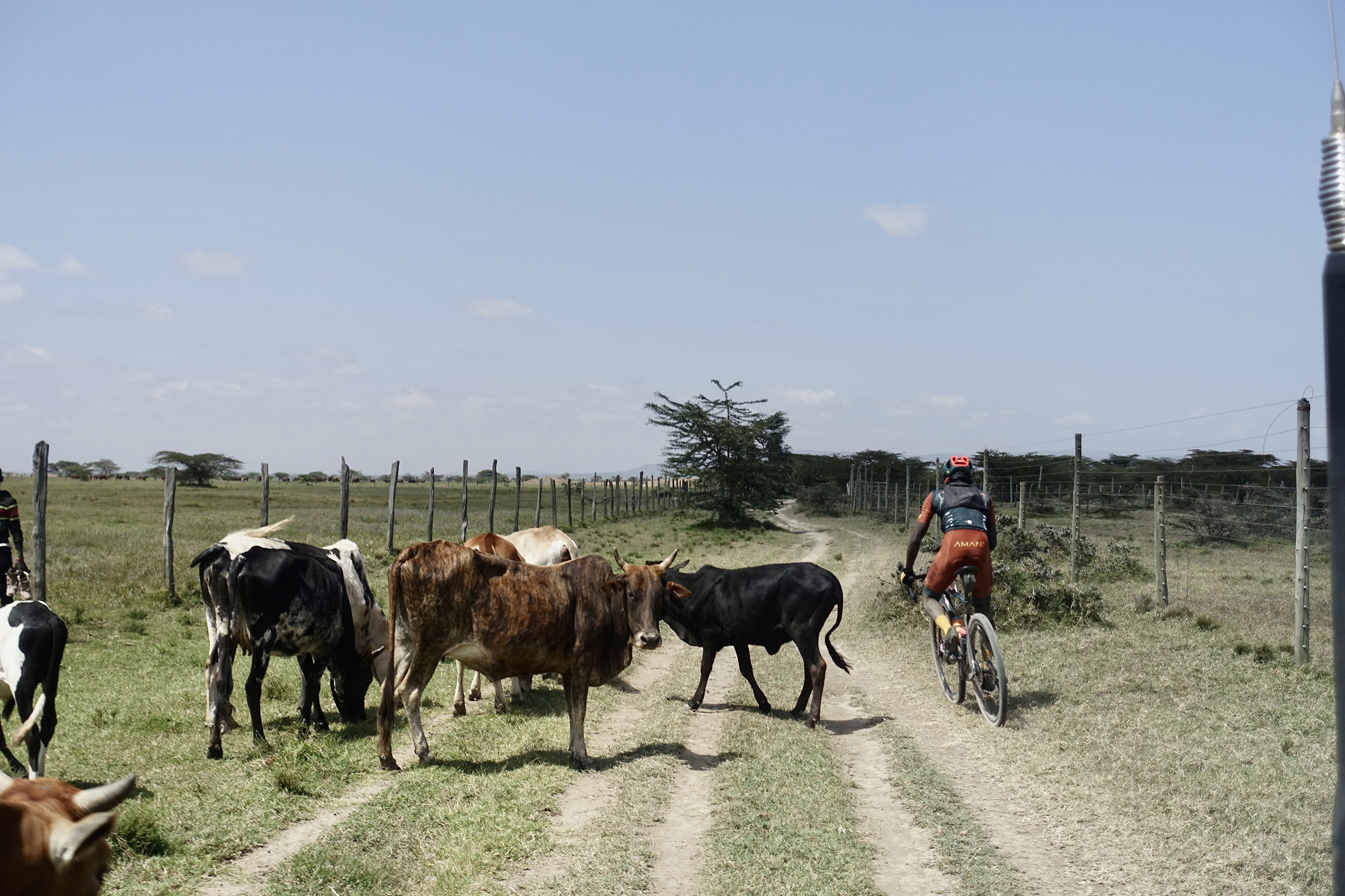
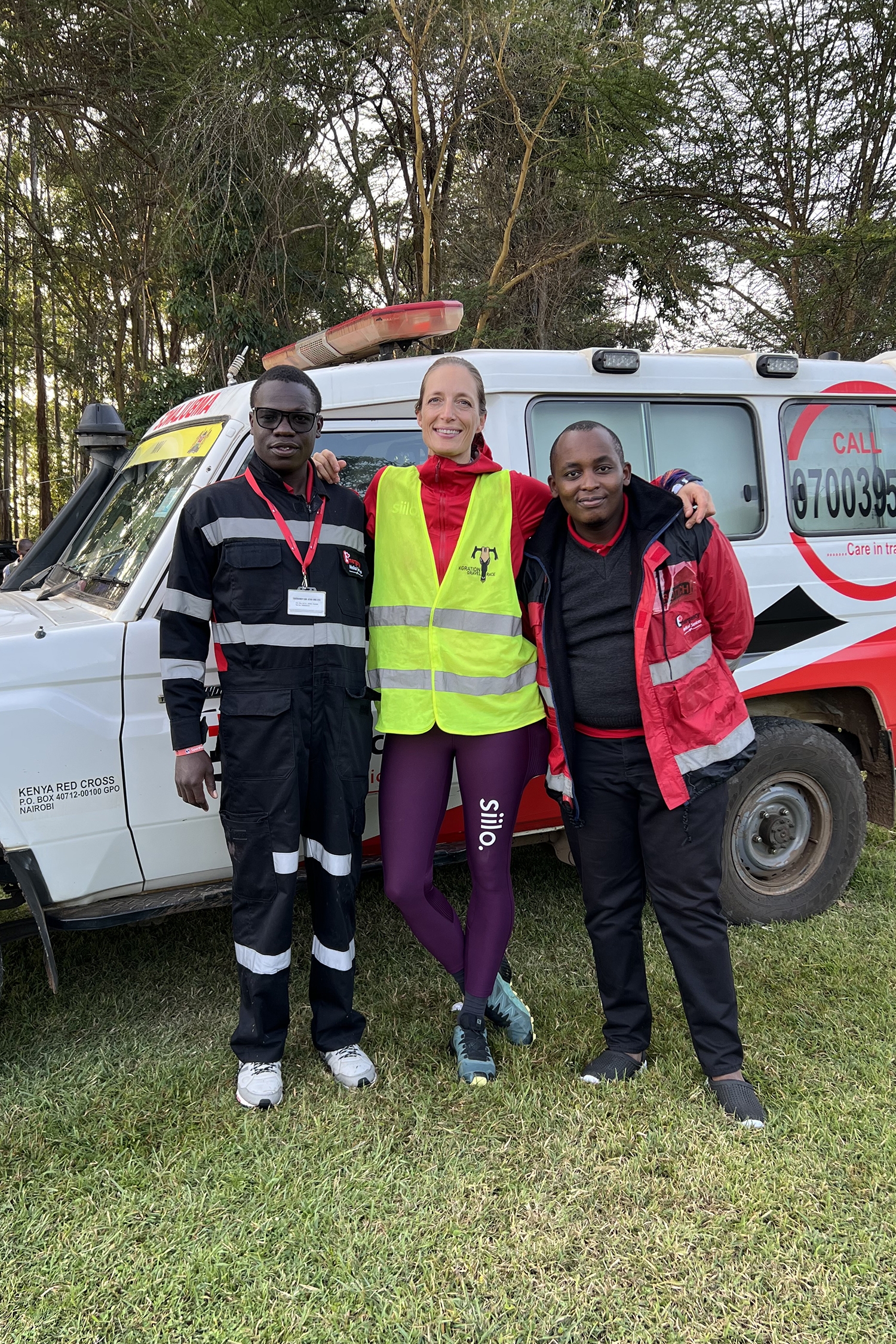
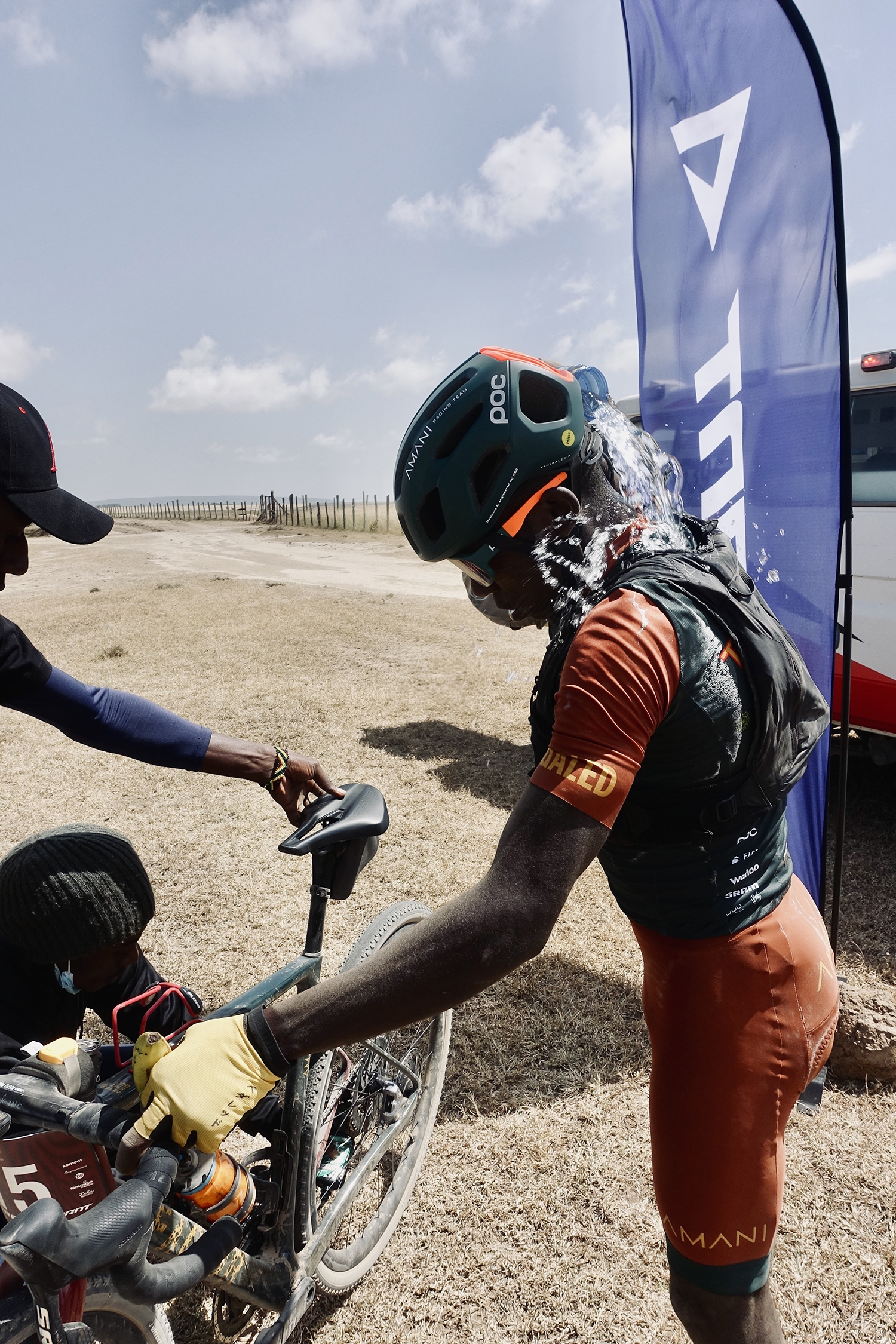
—
“Karibu Kenya!”
June 17th
It’s late, I’m lying in bed, a third night in Nairobi already. Outside you can hear the birds and crickets an although you can’t hear them, I do have vivid proof of mosquitoes as well.
After a long journey with some delays because of a broken plane at Schiphol Airport, and power outages at Nairobi Airport (welcome to Africa) I arrived in Kenya two nights ago.
A lot has been done since. I met up with the team, which has been a warm welcome and I’ve been made feel at home straight away. The Amani Project has an amazing crew, they work together with Savage Wilderness and the indigenous Maasai people for this race and lot’s get done. I’m impressed by the team and the way they are organised. The days have been filled with running final but essential errands, from charging trackers to stamping race caps. And I’ve met up with the other doctor (who’s got many years in trauma care and events up his sleeve, and I am very happy to be working together). Together we contacted the ambulances, to find out what we have and what not. Everything seems to be in order. We meet up with the ambulances in the Mira tomorrow. Oh, and I even managed to get a short ride in Karura forest, guided by Simon (from Cycle East Africa).
Then today was registration day! Double checking all the information, people getting their race numbers, trackers and goodie bags. Also an actual press conference from several news channels happened, with coverage on national television In the evening too!
Everyone seems very excited!
Tomorrow morning at 6 am we start.
Bikes will be loaded for transport and then we take off together to get to the camp where the race starts. A long day where there’s an approximate 5 – 6 hour drive to the Mara.
“Twenge!” (Let’s go!)
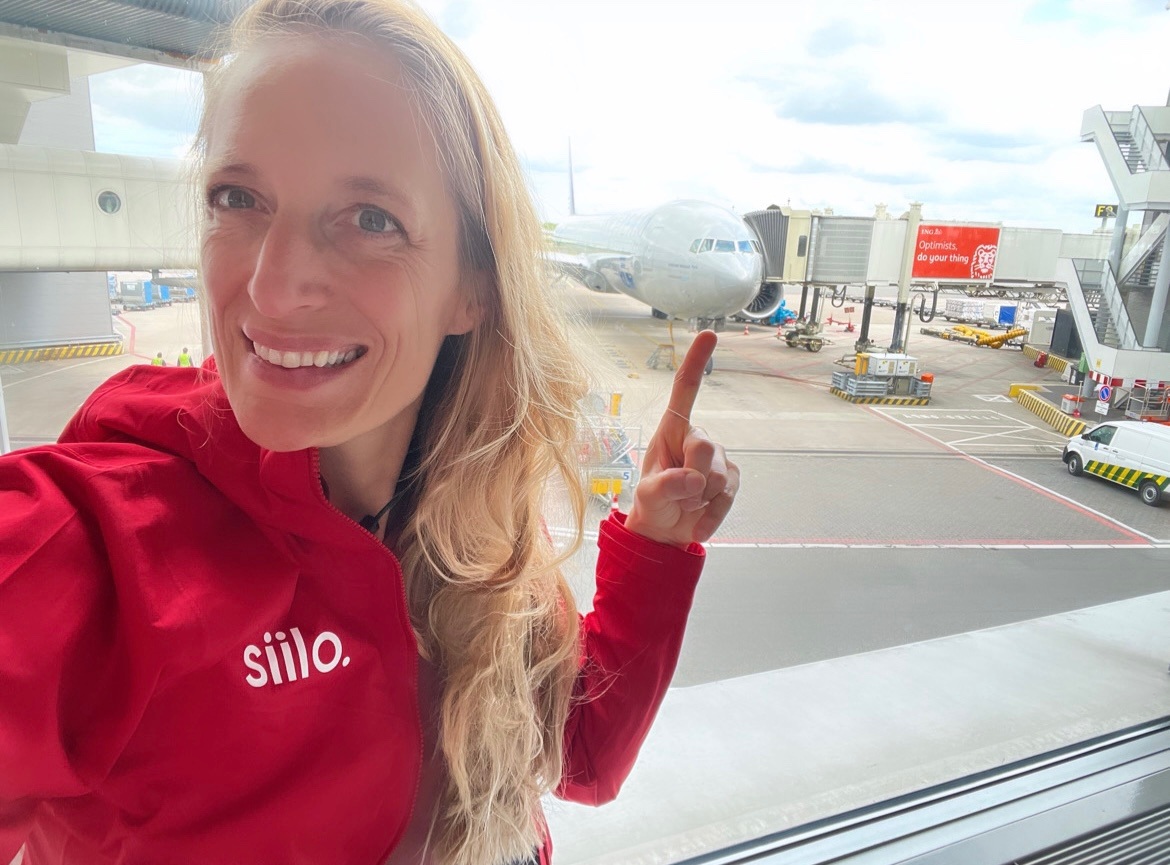
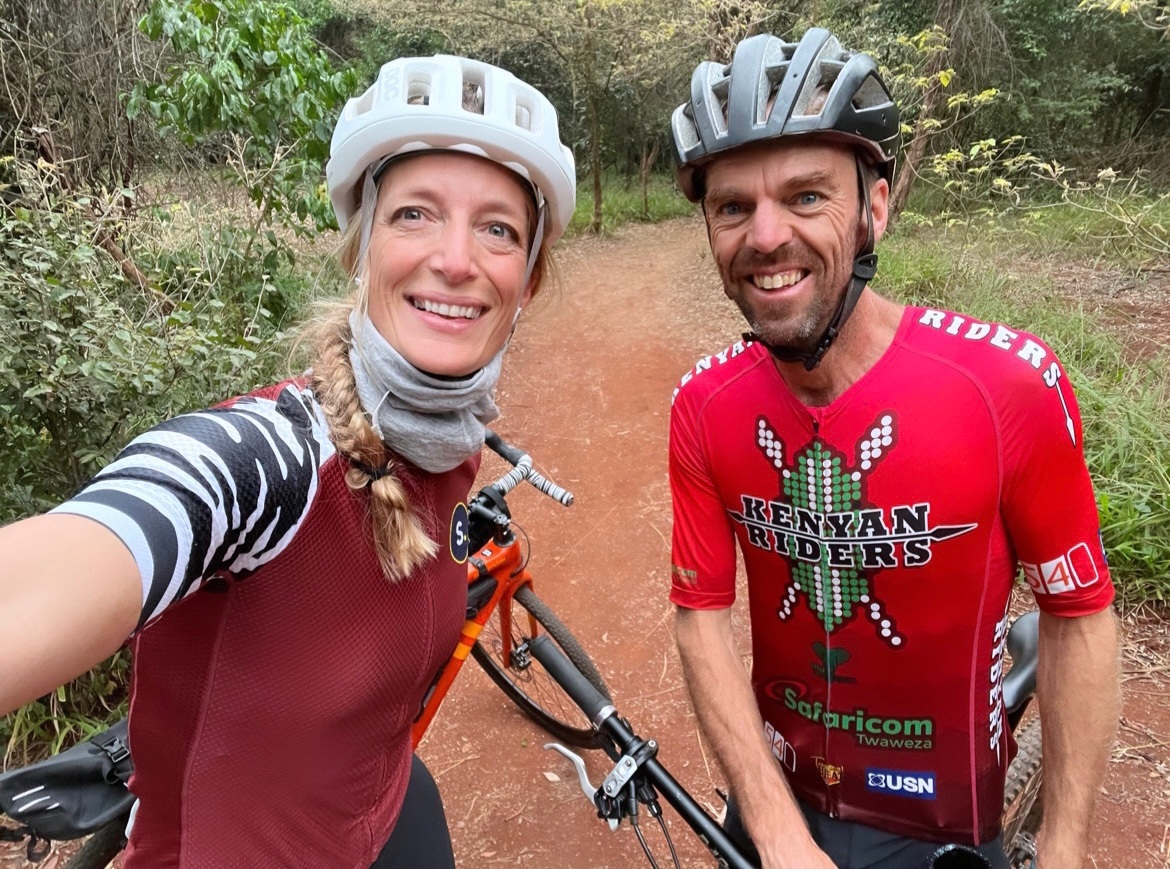
—
‘Watch out, dear! You might get blood all over your shirt.’
June 10th
The Migration Gravel Race is almost starting and with just a few days before the big event I got to answer some personal questions.
Why do I have to challenge myself in a bicycle race over challenging terrain? Why am I not just having a holiday? Last night, as I was lying in bed, I questioned myself briefly about my upcoming undertakings in Kenya and Tanzania. Why do I choose to work when I should be resting? Because I want to, and mostly, because I love it.
Today, my training was interrupted by two unplanned stops. The first was a fellow cyclist who was standing on the side of the road, which also happened unplanned. He was having troubles with his bike and tubes. His back tire was dead flat. He did have a spare tire though, but he left home without a pump and didn’t quite remember how to fix it. So I took the scene to the side of the road and a pair of dirty hands later, he was good to go again.
About an hour later I stopped again, this time for an elderly lady who tumbled off the dike with her bike. She had hurt herself. Bleeding cuts, some disorientation and she was suffering from the heat of the Dutch sun (yes, for real). I stopped a car and asked a stranger to drive her home. Then I asked another person to bring her bike back. I rode home to get my doctor’s bag and help her first. ‘Watch out, dear!’ she said as I approached her, ‘you might get blood all over your shirt.‘
The encounters ended my training prematurely, but I think I managed to help both strandees today and I was glad I could be of service. So why do I take off alone? To do these things, going away, being able to make and adjust plans as I go, instinctively, and to meet many new people while doing the things I love.
It’s my happy zone, feel free to tag along!
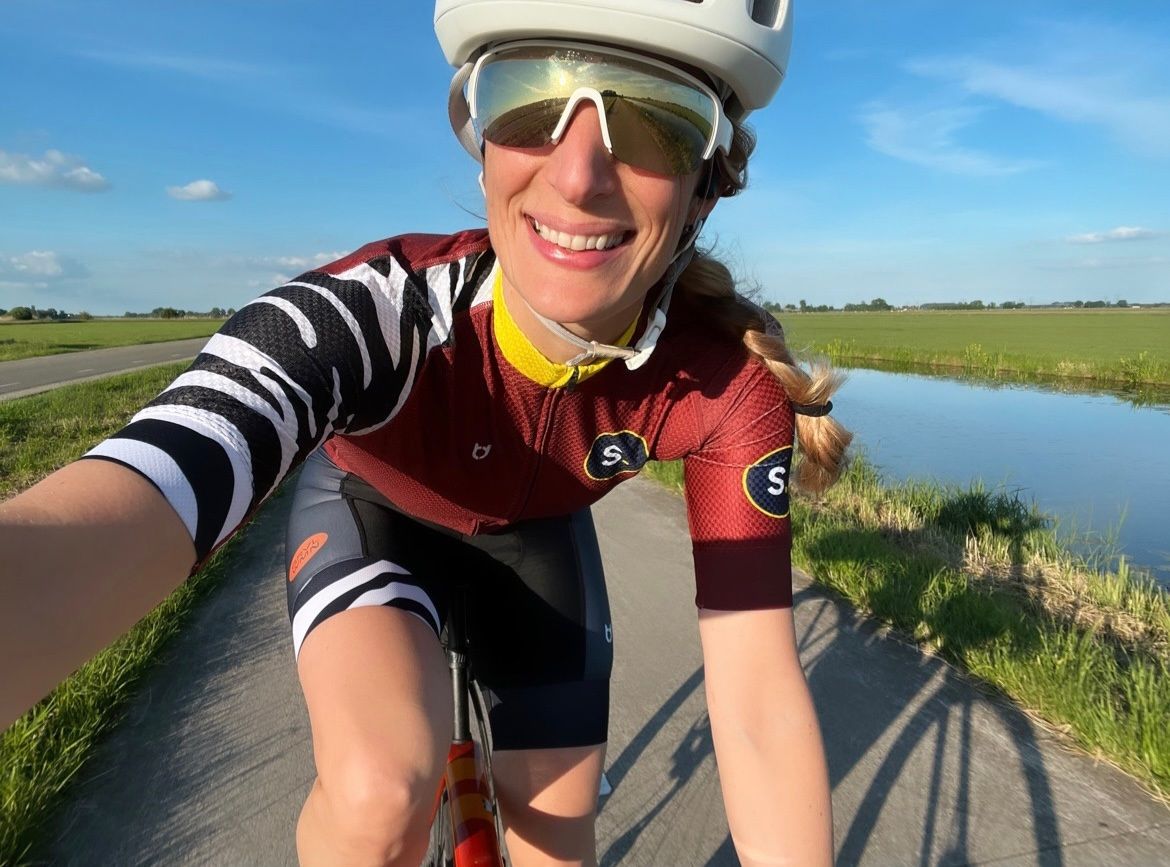
—
‘Time sometimes creeps up on you and it feels odd preparing for multiple things at the same time.’
May 26th
In 19 days time I fly to Kenya, where I will lead the medical part of the Migration Gravel Race (MGR), a four day Stage Race through the Maasai Mara. Just to only ride the Evolution Gravel Race in Tanzania myself shortly after.
I know what I’m getting myself into… sort of.
Last year I rode the MGR in Kenya. An amazing experience and quite tough on the body and the bike. 650 kilometers of unpaved terrain, rocks, washboards, gravel, water crossings, dirt roads, river banks, ditches and dust. Lot’s of shaking for the body, all with some 8000 meters of elevation. Full-on sports and adventure in some of the worlds’ best nature, surrounded by gorgeous likeminded souls. See the official Migration Gravel Race Instagram account for what it’s like.
But this year, I’m on the other side during the Migration Gravel Race in Kenya. I’ll be the lead Medic of the team, looking after the athletes racing. The organisers upped the game, gained publicity and the Amani Team is growing and getting stronger (more on the Amani Project).
Doubling the participants and international allure, doubling the support and the chance of accidents happening during the race goes up… And this is where the medics come in. Preparing for the race in the past weeks I’ve been working on the script for the medical part, trying to prepare for what could but hopefully will not happen during this race: gear, medication, equipment, timelines, numbers, flowcharts, knowledge. It comes with unexpected challenges.
One of the major challenges not tackled yet is finding a company that will cover international medical liability. It seems impossible to find one.
A list of companies not covering this:
VVAA (covering my liability in The Netherlands), practically all health insurers in The Netherlands, JOHO, Seapio (only covering for UK licenced), MBBS (also only UK based), AON, Battleface, MBBS.
With 19 days to go I sort of know what I’m getting into. I’m looking forward to this journey and letting you read along on the way.
For all (expedition medics): during the race there will be a group in Siilo, in case you want to read along, or might have good advice.
